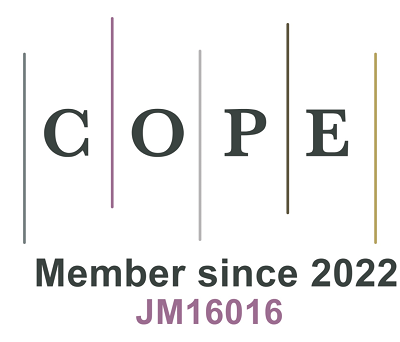REFERENCES
1. Younossi ZM, Wong G, Anstee QM, Henry L. The global burden of liver disease. Clin Gastroenterol Hepatol. 2023;21:1978-91.
2. Åberg F, Byrne CD, Pirola CJ, Männistö V, Sookoian S. Alcohol consumption and metabolic syndrome: clinical and epidemiological impact on liver disease. J Hepatol. 2023;78:191-206.
3. Hsu CL, Loomba R. From NAFLD to MASLD: implications of the new nomenclature for preclinical and clinical research. Nat Metab. 2024;6:600-2.
4. Rinella ME, Lazarus JV, Ratziu V, et al; NAFLD Nomenclature consensus group. A multisociety Delphi consensus statement on new fatty liver disease nomenclature. J Hepatol. 2023;79:1542-56.
5. Malnick SDH, Alin P, Somin M, Neuman MG. Fatty liver disease-alcoholic and non-alcoholic: similar but different. Int J Mol Sci. 2022;23:16226.
6. Ha J, Yim SY, Karagozian R. Mortality and liver-related events in lean versus non-lean nonalcoholic fatty liver disease: a systematic review and meta-analysis. Clin Gastroenterol Hepatol. 2023;21:2496-507.e5.
7. Ng CH, Lim WH, Hui Lim GE, et al. Mortality outcomes by fibrosis stage in nonalcoholic fatty liver disease: a systematic review and meta-analysis. Clin Gastroenterol Hepatol. 2023;21:931-9.e5.
8. Strandberg R, Jepsen P, Hagström H. Developing and validating clinical prediction models in hepatology - an overview for clinicians. J Hepatol. 2024;81:149-62.
9. Bhat M, Rabindranath M, Chara BS, Simonetto DA. Artificial intelligence, machine learning, and deep learning in liver transplantation. J Hepatol. 2023;78:1216-33.
10. Kalapala R, Rughwani H, Reddy DN. Artificial intelligence in hepatology- ready for the primetime. J Clin Exp Hepatol. 2023;13:149-61.
11. Ashmore R, Calinescu R, Paterson C. Assuring the machine learning lifecycle: desiderata, methods, and challenges. ACM Comput Surv. 2022;54:1-39.
12. Xing EP, Ho Q, Xie P, Wei D. Strategies and principles of distributed machine learning on big data. Engineering. 2016;2:179-95.
13. Blanco-Justicia A, Domingo-Ferrer J. Machine learning explainability through comprehensible decision trees. Springer International Publishing; 2019. pp. 15-26.
14. Müller D, Soto-Rey I, Kramer F. Towards a guideline for evaluation metrics in medical image segmentation. BMC Res Notes. 2022;15:210.
15. Farah L, Murris JM, Borget I, Guilloux A, Martelli NM, Katsahian SI. Assessment of performance, interpretability, and explainability in artificial intelligence-based health technologies: what healthcare stakeholders need to know. Mayo Clin Proc Digital Health. 2023;1:120-38.
16. Lo Vercio L, Amador K, Bannister JJ, et al. Supervised machine learning tools: a tutorial for clinicians. J Neural Eng. 2020;17:062001.
17. Jiang T, Gradus JL, Rosellini AJ. Supervised machine learning: a brief primer. Behav Ther. 2020;51:675-87.
18. Bi Q, Goodman KE, Kaminsky J, Lessler J. What is machine learning? A primer for the epidemiologist. Am J Epidemiol. 2019;188:2222-39.
19. Georgevici AI, Terblanche M. Neural networks and deep learning: a brief introduction. Intensive Care Med. 2019;45:712-4.
20. Al-Askar H, Radi N, Macdermott Á. Recurrent neural networks in medical data analysis and classifications. Elsevier; 2016. pp. 147-65.
21. Afzali MH, Sunderland M, Stewart S, et al. Machine-learning prediction of adolescent alcohol use: a cross-study, cross-cultural validation. Addiction. 2019;114:662-71.
22. Lee MR, Sankar V, Hammer A, et al. Using machine learning to classify individuals with alcohol use disorder based on treatment seeking status. EClinMed. 2019;12:70-8.
23. Roberts W, Zhao Y, Verplaetse T, et al. Using machine learning to predict heavy drinking during outpatient alcohol treatment. Alcohol Clin Exp Res. 2022;46:657-66.
24. Kinreich S, McCutcheon VV, Aliev F, et al. Predicting alcohol use disorder remission: a longitudinal multimodal multi-featured machine learning approach. Transl Psychiatry. 2021;11:166.
25. Park IG, Yoon SJ, Won SM, et al. Gut microbiota-based machine-learning signature for the diagnosis of alcohol-associated and metabolic dysfunction-associated steatotic liver disease. Sci Rep. 2024;14:16122.
26. Luetkens JA, Nowak S, Mesropyan N, et al. Deep learning supports the differentiation of alcoholic and other-than-alcoholic cirrhosis based on MRI. Sci Rep. 2022;12:8297.
27. Listopad S, Magnan C, Day LZ, et al. Identification of integrated proteomics and transcriptomics signature of alcohol-associated liver disease using machine learning. PLOS Digit Health. 2024;3:e0000447.
28. Cerović I, Mladenović D, Ješić R, et al. Alcoholic liver disease/nonalcoholic fatty liver disease index: distinguishing alcoholic from nonalcoholic fatty liver disease. Eur J Gastroenterol Hepatol. 2013;25:899-904.
29. Roy A, De A, Kulkarni AV, et al. Alcoholic liver disease/nonalcoholic fatty liver disease index for classification of patients with steatotic liver disease. J Obes Metab Syndr. 2024;33:222-8.
30. Sowa JP, Atmaca Ö, Kahraman A, et al. Non-invasive separation of alcoholic and non-alcoholic liver disease with predictive modeling. PLoS One. 2014;9:e101444.
31. Ahn JC, Noh YK, Rattan P, et al. Machine learning techniques differentiate alcohol-associated hepatitis from acute cholangitis in patients with systemic inflammation and elevated liver enzymes. Mayo Clin Proc. 2022;97:1326-36.
32. Gao B, Wu TC, Lang S, et al. Machine learning applied to omics datasets predicts mortality in patients with alcoholic hepatitis. Metabolites. 2022;12:41.
33. Dunn W, Li Y, Singal AK, et al. An artificial intelligence-generated model predicts 90-day survival in alcohol-associated hepatitis: a global cohort study. Hepatology. 2024;80:1196-211.
34. Lee BP, Vittinghoff E, Hsu C, et al. Predicting low risk for sustained alcohol use after early liver transplant for acute alcoholic hepatitis: the sustained alcohol use post-liver transplant score. Hepatology. 2019;69:1477-87.
35. Lee BP, Roth N, Rao P, et al. Artificial intelligence to identify harmful alcohol use after early liver transplant for alcohol-associated hepatitis. Am J Transplant. 2022;22:1834-41.
36. Jalal AH, Arbabi S, Ahad MA, Alam F, Ahmed MA. Wearable alcohol monitoring device for the data-driven transcutaneous alcohol diffusion model. Sensors. 2024;24:4233.
37. Wu T, Sherman G, Giorgi S, et al. Smartphone sensor data estimate alcohol craving in a cohort of patients with alcohol-associated liver disease and alcohol use disorder. Hepatol Commun. 2023;7:e0329.
38. Taylor-Weiner A, Pokkalla H, Han L, et al. A machine learning approach enables quantitative measurement of liver histology and disease monitoring in NASH. Hepatology. 2021;74:133-47.
39. Naoumov NV, Brees D, Loeffler J, et al. Digital pathology with artificial intelligence analyses provides greater insights into treatment-induced fibrosis regression in NASH. J Hepatol. 2022;77:1399-409.
40. Soon GST, Liu F, Leow WQ, Wee A, Wei L, Sanyal AJ. Artificial intelligence improves pathologist agreement for fibrosis scores in nonalcoholic steatohepatitis patients. Clin Gastroenterol Hepatol. 2023;21:1940-2.e3.
41. Goodman Z, Akbary K, Noureddin M, et al. Enhancing histology detection in MASH cirrhosis for artificial intelligence pathology platform by expert pathologist training. Liver Int Comm. 2024;5:e70007.
42. Brunt EM, Clouston AD, Goodman Z, et al. Complexity of ballooned hepatocyte feature recognition: defining a training atlas for artificial intelligence-based imaging in NAFLD. J Hepatol. 2022;76:1030-41.
43. Lim DYZ, Chung GE, Cher PH, Chockalingam R Jr, Kim W, Tan CK. Use of machine learning to predict onset of NAFLD in an all-comers cohort-development and validation in 2 large asian cohorts. Gastro Hep Adv. 2024;3:1005-11.
44. Deng Y, Ma Y, Fu J, et al. A dynamic machine learning model for prediction of NAFLD in a health checkup population: a longitudinal study. Heliyon. 2023;9:e18758.
45. Ghandian S, Thapa R, Garikipati A, et al. Machine learning to predict progression of non-alcoholic fatty liver to non-alcoholic steatohepatitis or fibrosis. JGH Open. 2022;6:196-204.
46. Njei B, Osta E, Njei N, Al-Ajlouni YA, Lim JK. An explainable machine learning model for prediction of high-risk nonalcoholic steatohepatitis. Sci Rep. 2024;14:8589.
47. Yaghouti AR, Zamanian H, Shalbaf A. Machine learning approaches for early detection of non-alcoholic steatohepatitis based on clinical and blood parameters. Sci Rep. 2024;14:2442.
48. Lee J, Westphal M, Vali Y, et al; LITMUS investigators. Machine learning algorithm improves the detection of NASH (NAS-based) and at-risk NASH: a development and validation study. Hepatology. 2023;78:258-71.
49. Charu V, Liang JW, Mannalithara A, Kwong A, Tian L, Kim WR. Benchmarking clinical risk prediction algorithms with ensemble machine learning for the noninvasive diagnosis of liver fibrosis in NAFLD. Hepatology. 2024;80:1184-95.
50. Verma N, Duseja A, Mehta M, et al. Machine learning improves the prediction of significant fibrosis in Asian patients with metabolic dysfunction-associated steatotic liver disease - the Gut and Obesity in Asia (GO-ASIA) study. Aliment Pharmacol Ther. 2024;59:774-88.
51. Mendizabal M, Cançado GGL, Albillos A. Evolving portal hypertension through Baveno VII recommendations. Ann Hepatol. 2024;29:101180.
52. Noureddin M, Goodman Z, Tai D, et al. Machine learning liver histology scores correlate with portal hypertension assessments in nonalcoholic steatohepatitis cirrhosis. Aliment Pharmacol Ther. 2023;57:409-17.
53. Kendall TJ, Chng E, Ren Y, Tai D, Ho G, Fallowfield JA. Outcome prediction in metabolic dysfunction-associated steatotic liver disease using stain-free digital pathological assessment. Liver Int. 2024;44:2511-6.
54. Ahn JC, Attia ZI, Rattan P, et al. Development of the AI-cirrhosis-ECG score: an electrocardiogram-based deep learning model in cirrhosis. Am J Gastroenterol. 2022;117:424-32.
55. Udompap P, Liu K, Attia IZ, et al. Performance of AI-enabled electrocardiogram in the prediction of metabolic dysfunction-associated steatotic liver disease. Clin Gastroenterol Hepatol. 2024;Epub ahead of print.
56. Sato M, Akamatsu M, Shima T, et al. Impact of a novel digital therapeutics system on nonalcoholic steatohepatitis: the NASH app clinical trial. Am J Gastroenterol. 2023;118:1365-72.
57. Wang K, Margolis S, Cho JM, et al. Non-invasive detection of early-stage fatty liver disease via an on-skin impedance sensor and attention-based deep learning. Adv Sci. 2024;11:e2400596.
58. Ghosh S, Zhao X, Alim M, Brudno M, Bhat M. Artificial intelligence applied to ‘omics data in liver disease: towards a personalised approach for diagnosis, prognosis and treatment. Gut. 2025;74:295-311.
59. Fujii I, Matsumoto N, Ogawa M, et al. Artificial intelligence and image analysis-assisted diagnosis for fibrosis stage of metabolic dysfunction-associated steatotic liver disease using ultrasonography: a pilot study. Diagnostics. 2024;14:2585.
60. Santoro S, Khalil M, Abdallah H, et al. Early and accurate diagnosis of steatotic liver by artificial intelligence (AI)-supported ultrasonography. Eur J Intern Med. 2024;125:57-66.
61. Li C, Wang Y, Bai R, et al. Development of fully automated models for staging liver fibrosis using non-contrast MRI and artificial intelligence: a retrospective multicenter study. EClinMed. 2024;77:102881.
62. Thirunavukarasu AJ, Ting DSJ, Elangovan K, Gutierrez L, Tan TF, Ting DSW. Large language models in medicine. Nat Med. 2023;29:1930-40.
63. Ge J, Sun S, Owens J, et al. Development of a liver disease-specific large language model chat interface using retrieval-augmented generation. Hepatology. 2024;80:1158-68.
64. Hatem R, Simmons B, Thornton JE. A call to address AI “hallucinations” and how healthcare professionals can mitigate their risks. Cureus. 2023;15:e44720.
65. Novoa J, Chagoyen M, Benito C, Moreno FJ, Pazos F. PMIDigest: interactive review of large collections of pubmed entries to distill relevant information. Genes. 2023;14:942.
66. Kresevic S, Giuffrè M, Ajcevic M, Accardo A, Crocè LS, Shung DL. Optimization of hepatological clinical guidelines interpretation by large language models: a retrieval augmented generation-based framework. NPJ Digit Med. 2024;7:102.
67. der Laak J, Litjens G, Ciompi F. Deep learning in histopathology: the path to the clinic. Nat Med. 2021;27:775-84.
68. Waqas A, Bui MM, Glassy EF, et al. Revolutionizing digital pathology with the power of generative artificial intelligence and foundation models. Lab Invest. 2023;103:100255.
69. Lu MY, Chen B, Williamson DFK, et al. A visual-language foundation model for computational pathology. Nat Med. 2024;30:863-74.
70. Acosta JN, Falcone GJ, Rajpurkar P, Topol EJ. Multimodal biomedical AI. Nat Med. 2022;28:1773-84.









